As the season of perennial flowers begins, the month of June brings with it a burst of color as gardens flourish with vibrant blooms. These flowers come in various sizes, ranging from small shrub-like plants to larger ones. The most notable aspect of these perennials is that they bloom and stay colorful all season long, requiring substantial exposure to sunlight.
Growing these plants is not only rewarding but also effortless as they can sprout either from seedlings or seeds. To help you choose which perennials to cultivate this summer, here are some of the best options:
The Anise Hyssop, also known as Agastache foeniculum, is a popular choice. Scientifically classified as a plant zone 4-8, it requires full sun to partial shade to thrive. This plant belongs to the mint family, emitting a soothing mint aroma when basked in summertime sunshine. Its purple flowers and shrubby appearance make it an ideal addition to butterfly gardens, drawing in pollinators in droves.
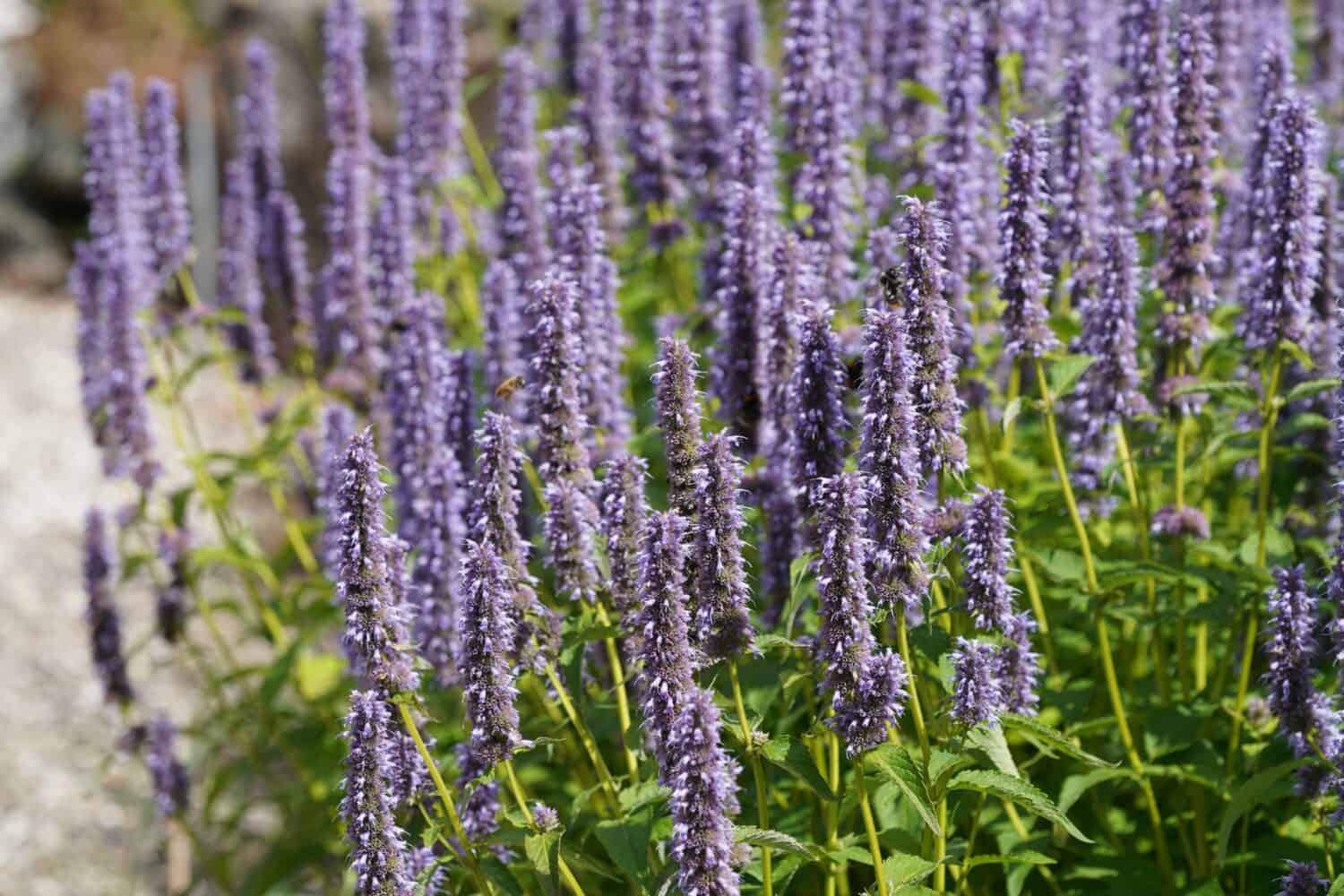
Anise hyssops are beautiful shrubby plants with purple flowers that are a favorite among hummingbirds, bees, and butterflies due to the abundance of nectar present in them. They require low maintenance and only need occasional watering and 10-10-10 fertilizer like other perennials. To promote blooming, make sure to deadhead the flowers at least once. Keep in mind that it takes approximately two years to achieve full bloom when grown from seed. If you want an immediate bloom this season, consider purchasing seedlings from a nursery or another gardener.
The balloon flower, also known as Platycodon grandiflorus, is a standard-sized perennial flower that grows between 12-20 inches and has a plant zone of 3-8. It thrives in partial shade with a combination of full sun exposure. It is one of the easiest plants to grow, and it comes in pink, white, or purple flowers. The plant gets its name from its flower buds, which resemble full balloons before they open and bell-shaped stars after they bloom.
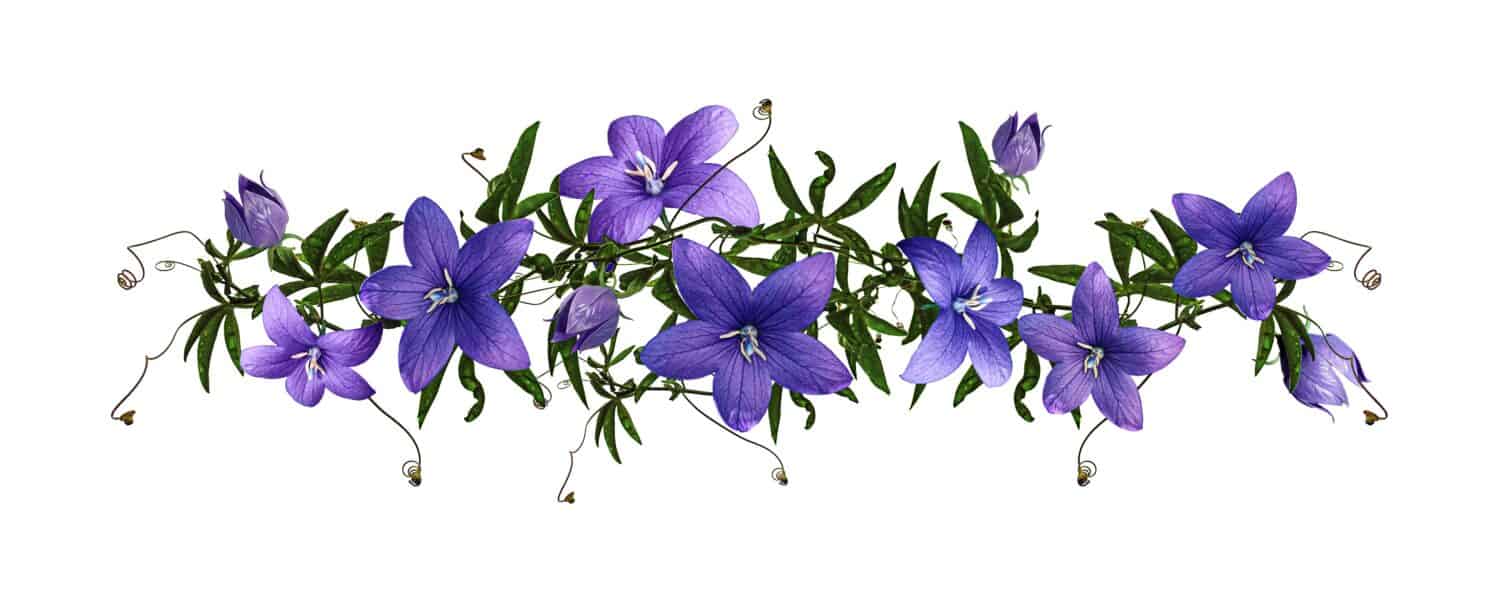
Balloon flowers, resembling inflated balloons, are a delightful addition to any garden border. They complement other low-growing perennials well, but it’s important to stake the taller plants as they may become heavy when fully bloomed. These fascinating flowers can bloom in the first year if grown from seeds; however, their growth depends on the climate and location of the area where they are grown. Another stunning perennial plant to consider for your butterfly garden is the shrub-like Butterfly Weed, scientifically known as Asclepias tuberose. With a plant zone of 3-9, this plant thrives in full sunlight and grows up to 24-26 inches tall. If you want a member of the milkweed family in your garden, the Butterfly Weed is a great choice. It forms a beautiful shrub adorned with green leaves, clusters, and bright orange perennial flowers.

The Butterfly Weed is a stunning plant that can grow up to 24-26 inches tall and needs to be exposed to complete sunlight. It can either be cultivated in a formal perennial garden or scattered in a wild butterfly garden where it will attract pollinators. The Butterfly Weed can also self-sow and grow into plants when the seed pods split open and disperse. It is essential to deadhead flowers regularly to encourage new growth.
Another beautiful perennial flower is the Coneflower, scientifically known as Echinacea sp. This self-seeding plant can grow up to 3-4 feet tall and is suitable for plant zones 3-9. It requires total sun exposure to thrive and is popular among gardeners for its ease of growth. The drought and heat-resistant Coneflower is also one of the most favored perennials in the United States, as it is native to the country and grows as a wildflower in various county areas.
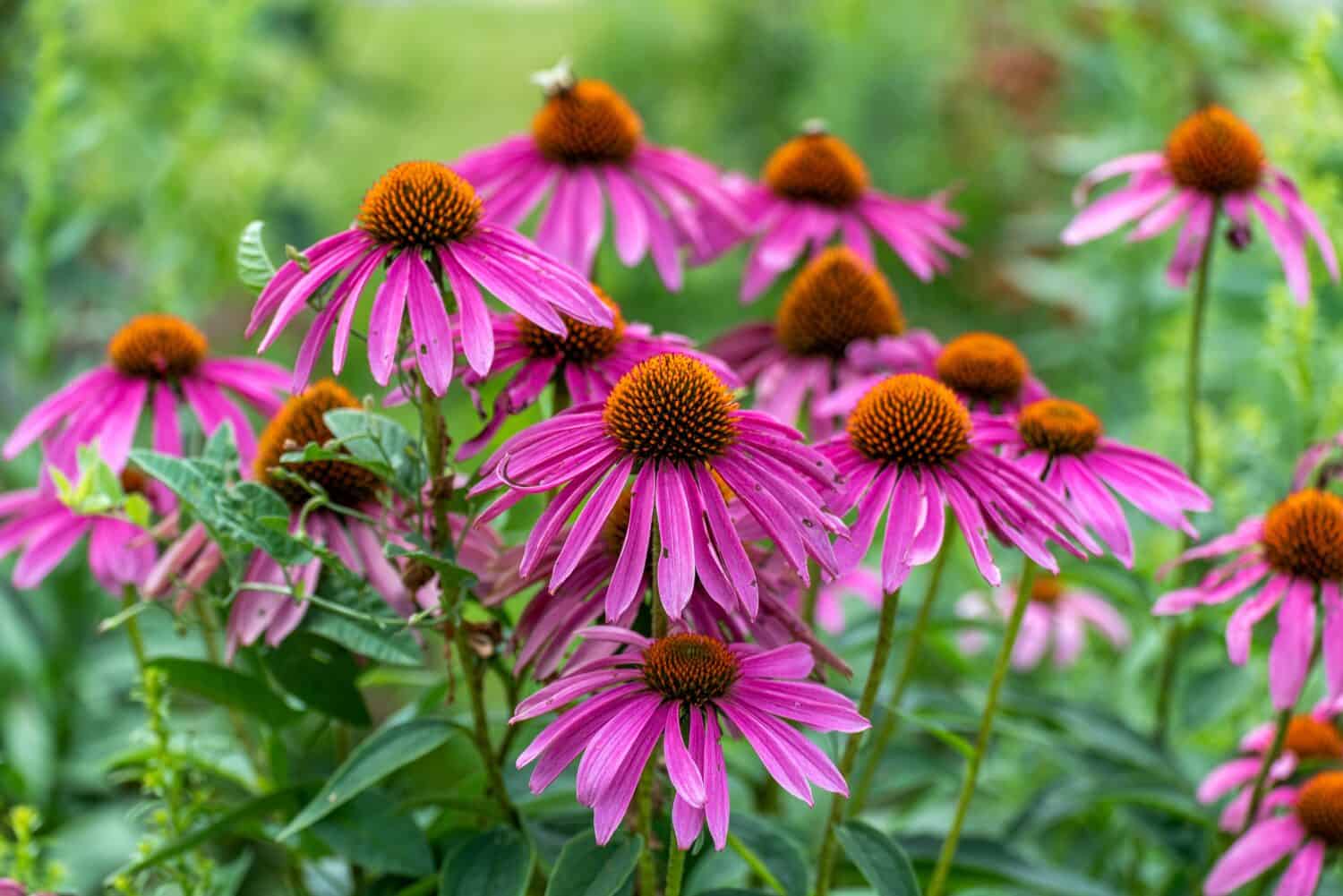
Coneflowers are a great addition to any garden as they are both hardy and beautiful. These flowers have a similar appearance to daisies and have a longer blooming period compared to other perennials. By removing spent blooms, you can keep the plant healthy and blooming all summer long. If you’re interested in propagating your coneflower plants, simply leave the flowers on the plant and allow the seeds to drop onto the soil. They will remain dormant until the following spring when they will sprout and produce new flowers. Keep in mind that the success of this process will depend on the climate of your area.
Another great perennial option is coreopsis, which is known for its dual blooms. After the first bloom has faded, simply cut the plant back to enjoy a second round of flowers. Coreopsis requires full sun exposure and comes in 12-24 inch sizes, making it an easy plant to care for. Whether you choose to start from seed or purchase a potted plant from your local garden center, these sunny yellow flowers are sure to brighten up any garden bed.
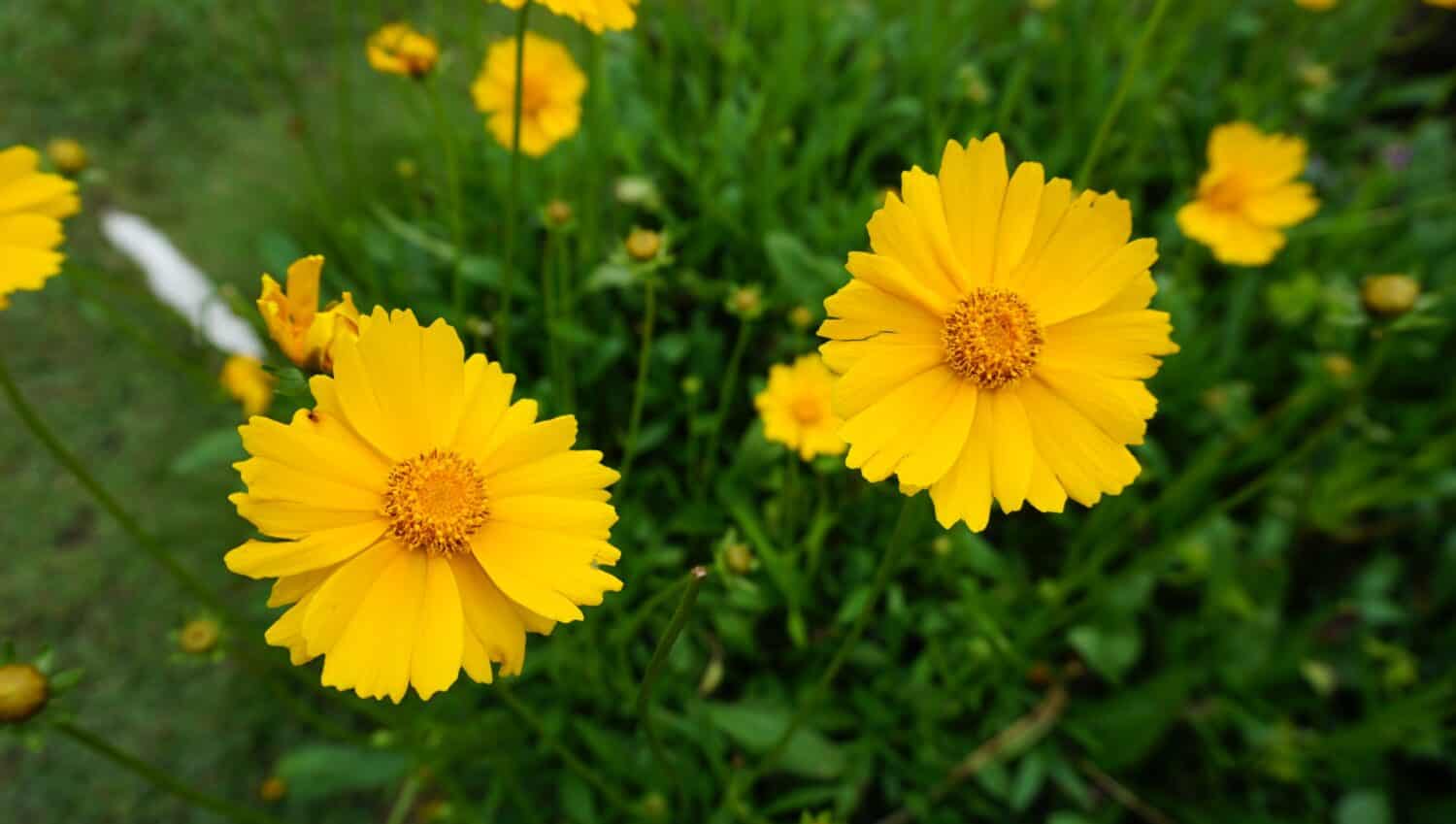
Coreopsis, a member of the Aster family, bears two beautiful blooms. Its leaves are frilly and lacy, similar to those of the daisy plant. Pruning at least one-third of the plant after its first bloom elapses will promote a second bloom after the initial growth from seeds, which will develop into flowers during fall. The plant takes about 60 days to blossom from seed, and it can still bloom in the season regardless of whether you sow from seed or use starter plants.
Daylily, also known as hemerocallis sp, is a crop with a plant size of about 1-4 feet and a plant zone of 4-9. It requires full sunlight exposure and belongs to a vast genus with over 35,000 varieties produced annually through hybridization. Although the flowers last only a day, they are still worth the planting effort.
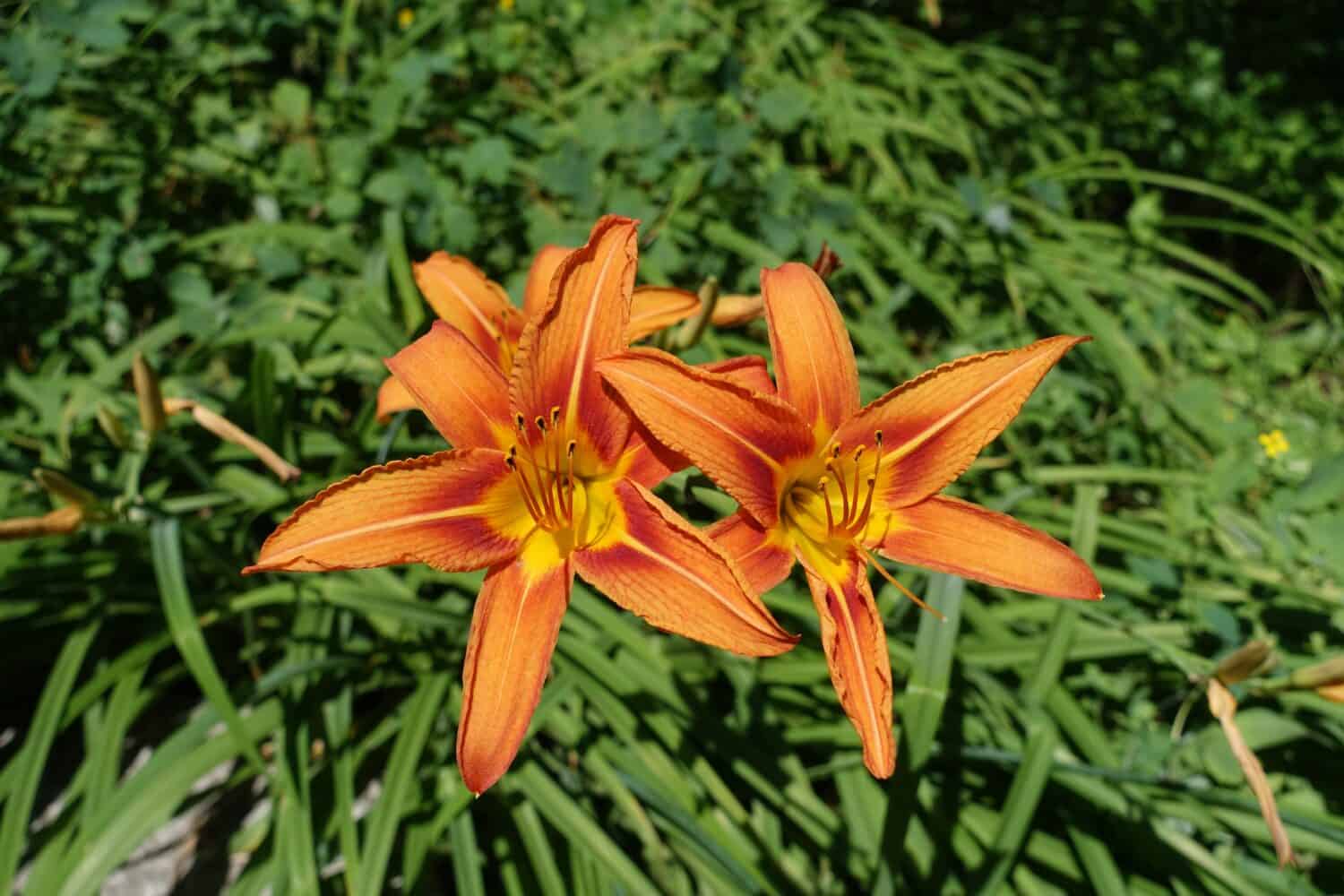
Daylilies are a low-maintenance plant that is perfect for mass plantings. Once the flowers begin to bloom, you can remove them daily without any worries. During Fall, it’s essential to remove all dead leaves and stems to promote healthy growth in the upcoming season. However, if you want to enjoy the lilies’ beauty, pick them right when they bloom. Keep in mind that new daylilies grow after 2-3 years when planted from seeds.
Moving on to Globe Thistles, these perennials are drought-resistant and attract pollinators and wildlife. Scientifically known as Echinops sp, they grow to be 2-4 feet tall and thrive in plant zones 3-8. To make sure they flourish, make sure they have full sun exposure and partial shade.
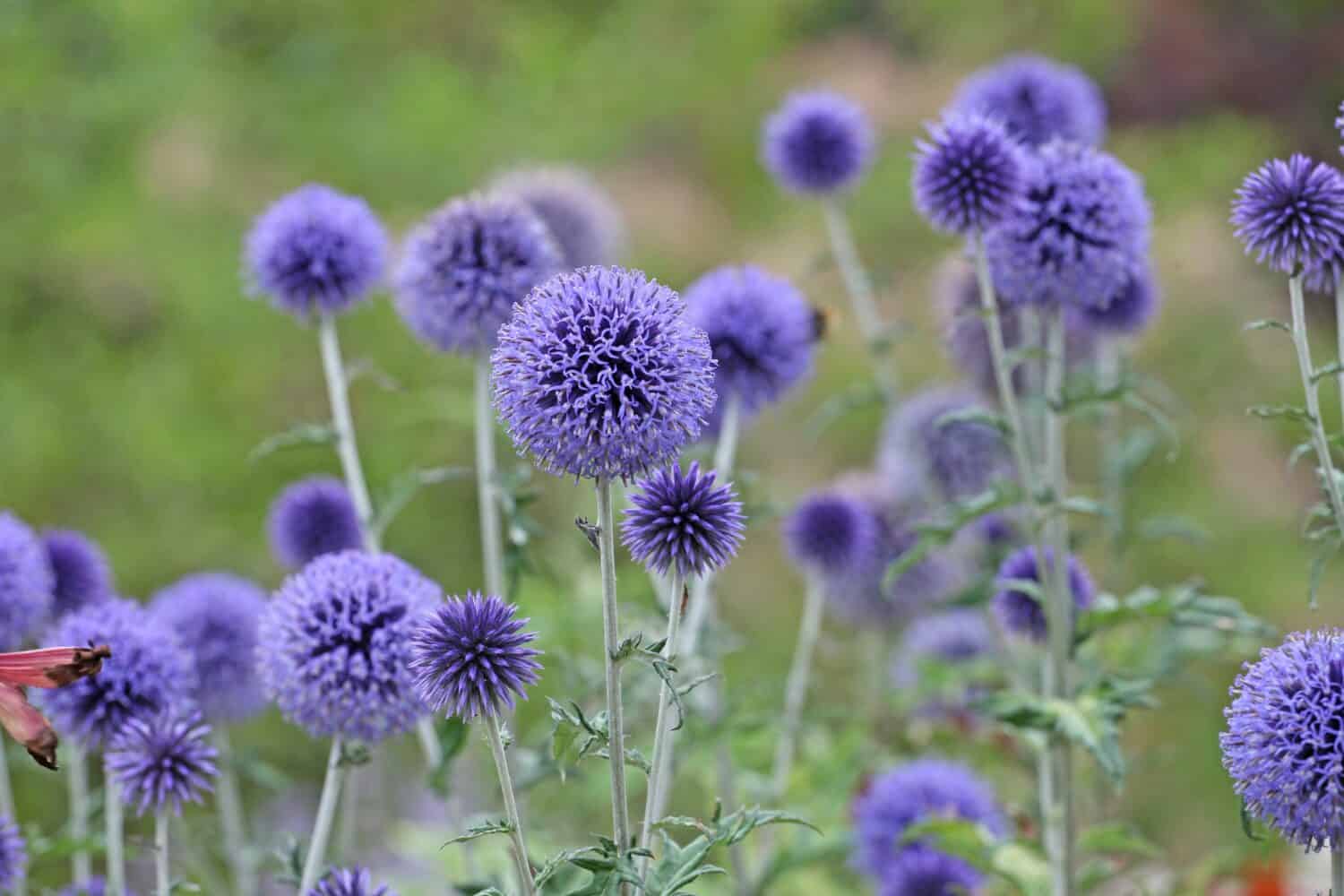
Attracting pollinators like bees and butterflies, globe thistles are a fantastic addition to any garden during the June season. With their vibrant purple-blue color and spiky globe-shaped flowers, these plants also have spiny leaves that deter deer and rabbits, making them a great choice for those who enjoy watching wildlife in their gardens. Additionally, their drought-resistant nature and love for sunlight exposure and breeze make them perfect for border planting along brick walls. Globe thistles are fast-growing and can be sown directly from seeds, growing within 6 to 8 weeks.
Another great perennial flower to consider is the joe-pye weed, scientifically known as eupatorium purpureum. This striking plant can grow up to 8 feet tall and thrives in full sun with partial shade, making it ideal for a variety of garden settings. Native to the North American side of the U.S., this stunning plant produces beautiful wildflowers and is sure to attract attention from both people and pollinators alike.
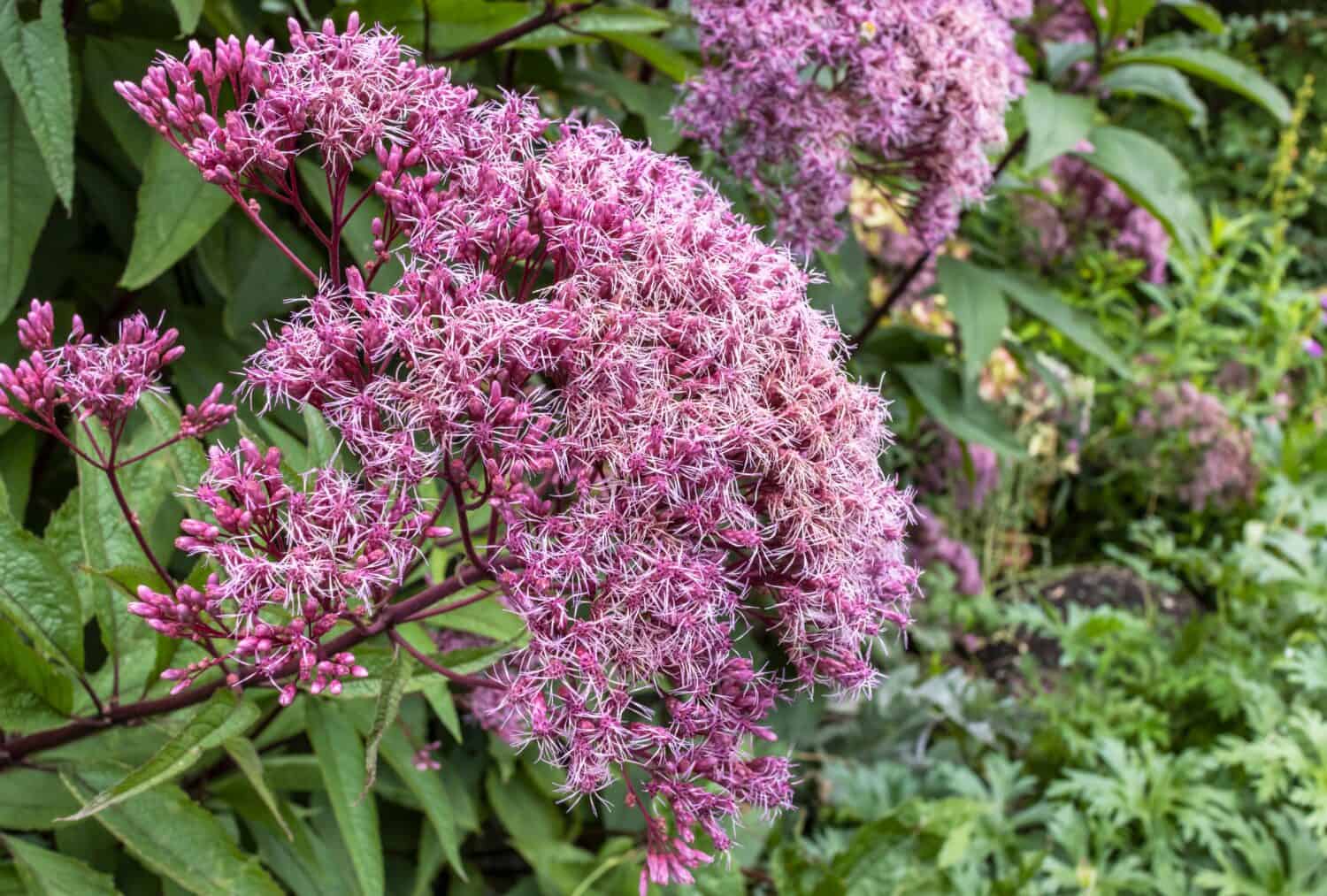
Joe-Pye weed is a great option for naturalized gardens in the North East. In the summertime, the plant boasts gorgeous clusters of pink and purple flowers that attract butterflies. It’s also an excellent choice for those looking to add privacy screens to their outdoor space. Joe-Pye weed thrives in areas with water, so it’s perfect for rain gardens or stream edges. As a native species, it can be grown from seeds, but it won’t flower until the following season. For those who want to enjoy the colorful flowers right away, seedlings from a nearby nursery are the way to go.
Another great perennial flower for summer gardening is lavender. Its scientific name is Lavendula sp., and it grows to be 2-3 feet tall in plant zones 5-9 with full sun exposure. Lavender is planted mostly for its aroma and therapeutic benefits, but it’s also a lovely addition to any garden. The spiky flowers sit atop a silver foliage mound that has its own aromatic qualities.
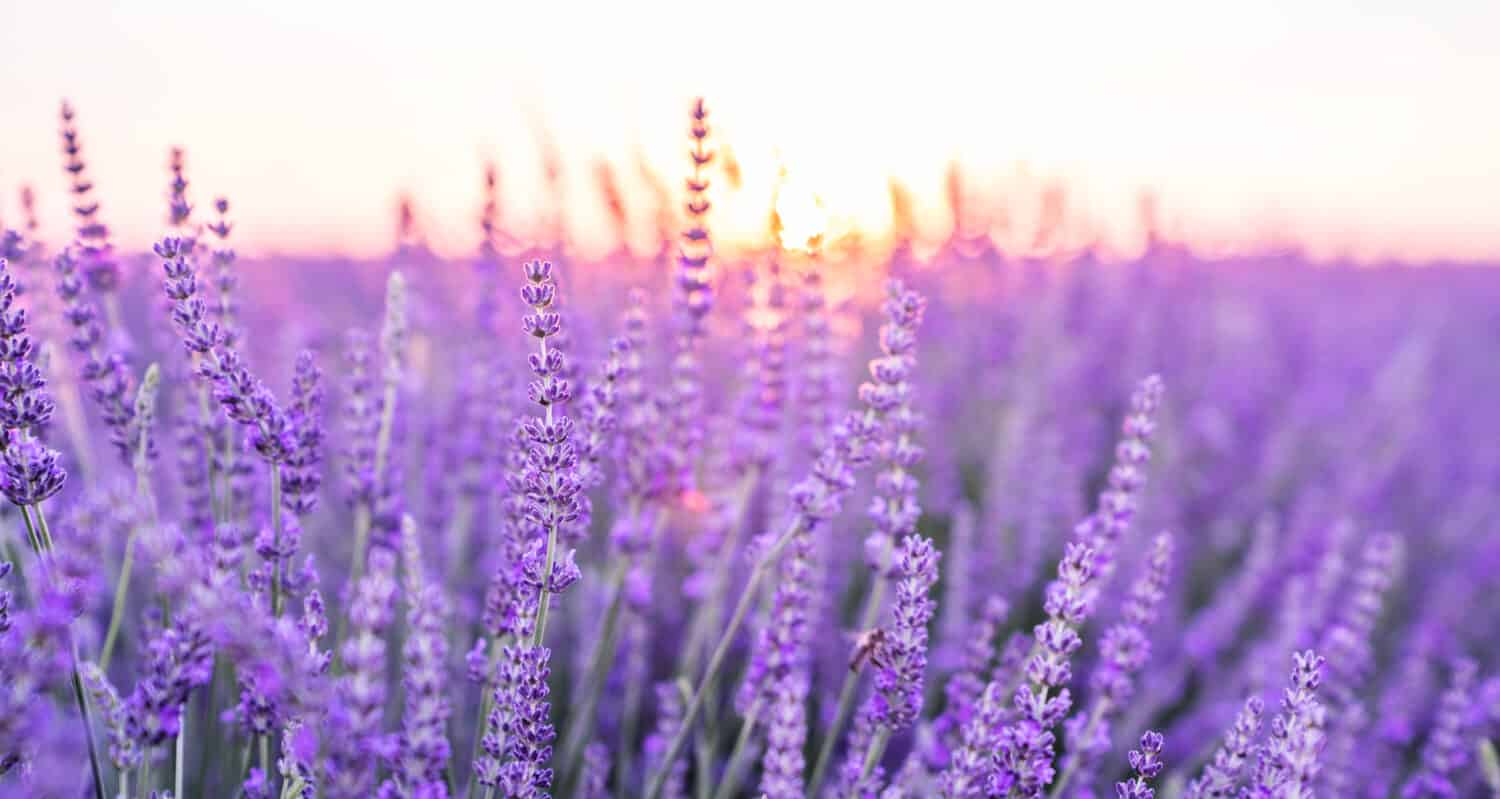
Lavender flowers have numerous benefits, both aromatic and therapeutic. Combining lavender with roses can create a perfect blend, but the plant also pairs well with other species. It’s best to plant lavender away from patios or pools since they are known to attract bees. However, lavender may not be the most reliable plant, especially if you want to regrow it in the next season. It requires dry conditions to flourish and may struggle in humid weather. To overcome this issue, it’s better to plant new lavender plants every few years instead of relying on the old ones to regrow. Growing lavender from seeds may not be easy, so it’s advisable to visit a local nursery for the best seedlings. The pincushion flower is another low-maintenance perennial flower also known as scabio sp. With a plant zone of 3-7 and size of 12-18 inches, it requires full sun exposure. These beautiful summer flowering plants come in various colors, including purple, blue, white, and pink, and are similar to clover flowers, but flatter.

The pincushion flower is a stunning perennial that is easy to care for in your garden. Its unique stem allows its flowers to dance delicately in the sunlight, adding a touch of elegance to any yard. To ensure continuous blooming throughout the summer months, be sure to deadhead the flowers. With just three months from seed to bloom, you can enjoy these beautiful flowers in no time. Keep in mind that climate and location may affect the growth of your pincushion flowers.
Another popular perennial flower is the rose, scientifically known as rosa sp. This flower requires plenty of sunshine and water, but be warned, it is not a low-maintenance plant. The size of the plant can vary greatly depending on the species and it is recommended for planting in zones 4-11. Despite the challenge, with persistence and care, anyone can grow a breathtaking rose garden to be proud of.
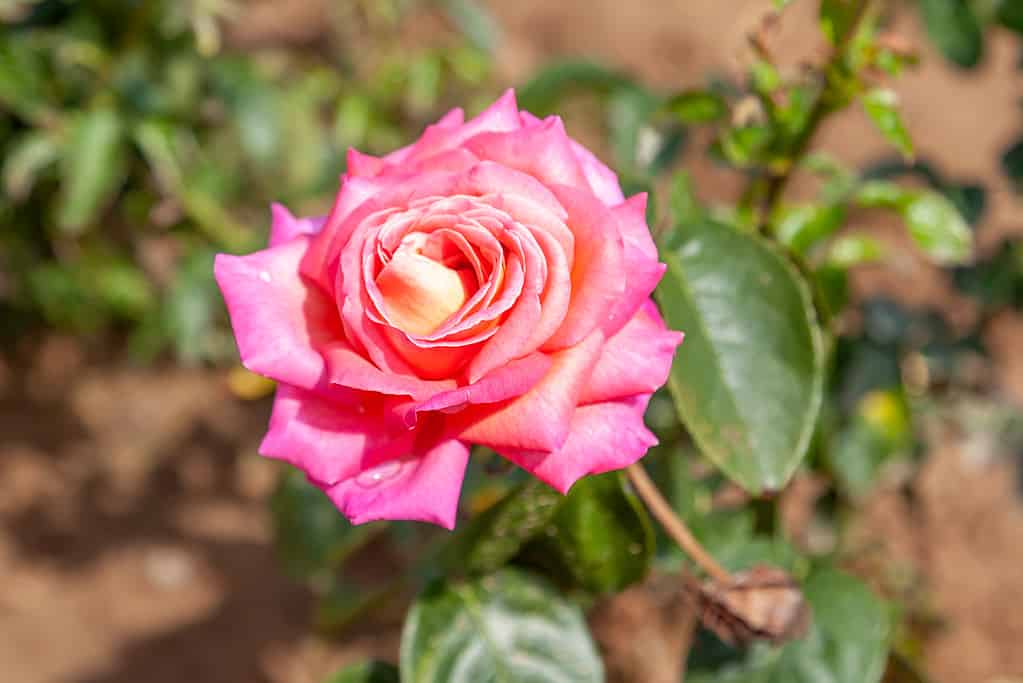
Perennial roses are a beloved plant due to their diverse forms and colors. However, it’s important to note that they require ample water and sunlight to thrive, so only consider growing them if you can provide these necessities. With the right conditions, roses can be relatively easy to care for and bloom continuously. Keep in mind that growing from seed takes up to 3 years to see blossoms, whereas pre-grown cuttings will grow faster and can be obtained from local nurseries.
For those seeking low-maintenance perennial flowers, Sea Holly is a great option. This hardy plant does well in sandy soil and requires minimal watering. It needs full sun, thrives in plant zones 5-6, and can reach a size of 2-3 feet. The sea holly blooms for an extended period and is a resilient choice for any garden.
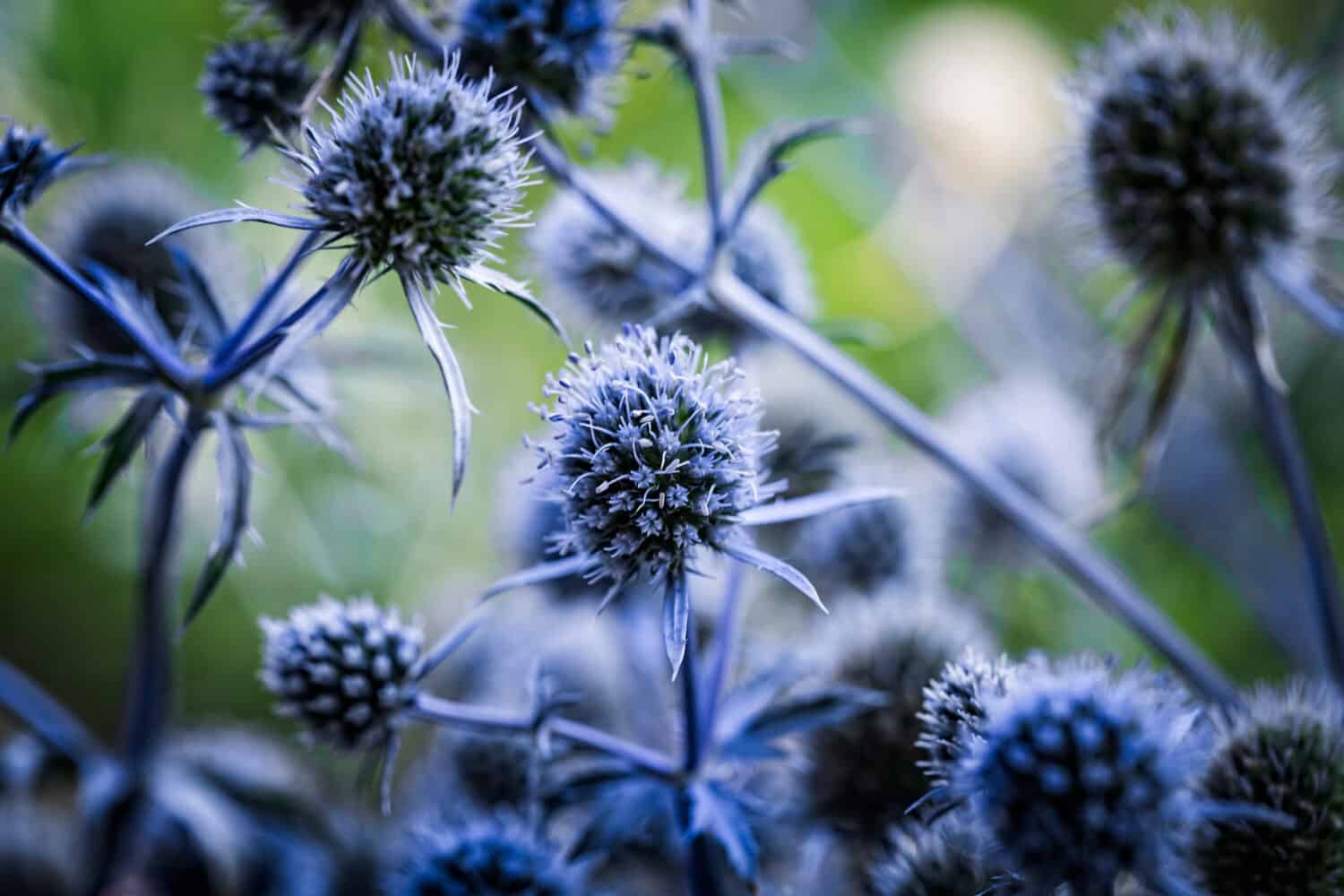
Sea holly is a type of wild plant that grows well in sandy soils and can even thrive in poor quality soil. Its unique appearance features flowers that resemble thistles but with ornamental bracts, set against silver foliage. This plant is ideal for tough areas in your garden where other plants won’t grow. However, it’s quite challenging to grow sea holly from seeds, so it’s best to use starter plants for better chances of blooming in June.
On the other hand, sedum sp is a perennial flower that’s easy to propagate and offers excellent ground coverage. It grows up to three feet tall depending on the variety and has a plant zone of 3-11. For it to flourish, full sunlight exposure is necessary.

Sedum is a perennial flower that is simple to propagate and cultivate. It pairs well with sea holly because both are low-maintenance plants that can adapt to various soil types and water conditions. Sedum has many varieties, but the most common type is the blue carpet, while the Autumn joy is another popular variation that is often used as a perennial. These plants grow effortlessly and tend to spread on their own once they touch the ground, forming roots in the process.
If you wish to plant sedum, early summer is the perfect time to do so. You can also plant specific varieties from seeds at this time, and they will still mature and blossom beautifully.
On the other hand, the Shasta daisy is a stunning perennial that originates from California. Though it may not be what you expect from a typical daisy plant, it is still an attractive addition to any garden. The Shasta daisy, scientifically known as Leucanthemum x superbum, grows up to 3 to 4 feet tall and requires full sun exposure and frequent watering and deadheading. It has a plant zone of 4-9 and will bloom beautifully if cared for attentively.
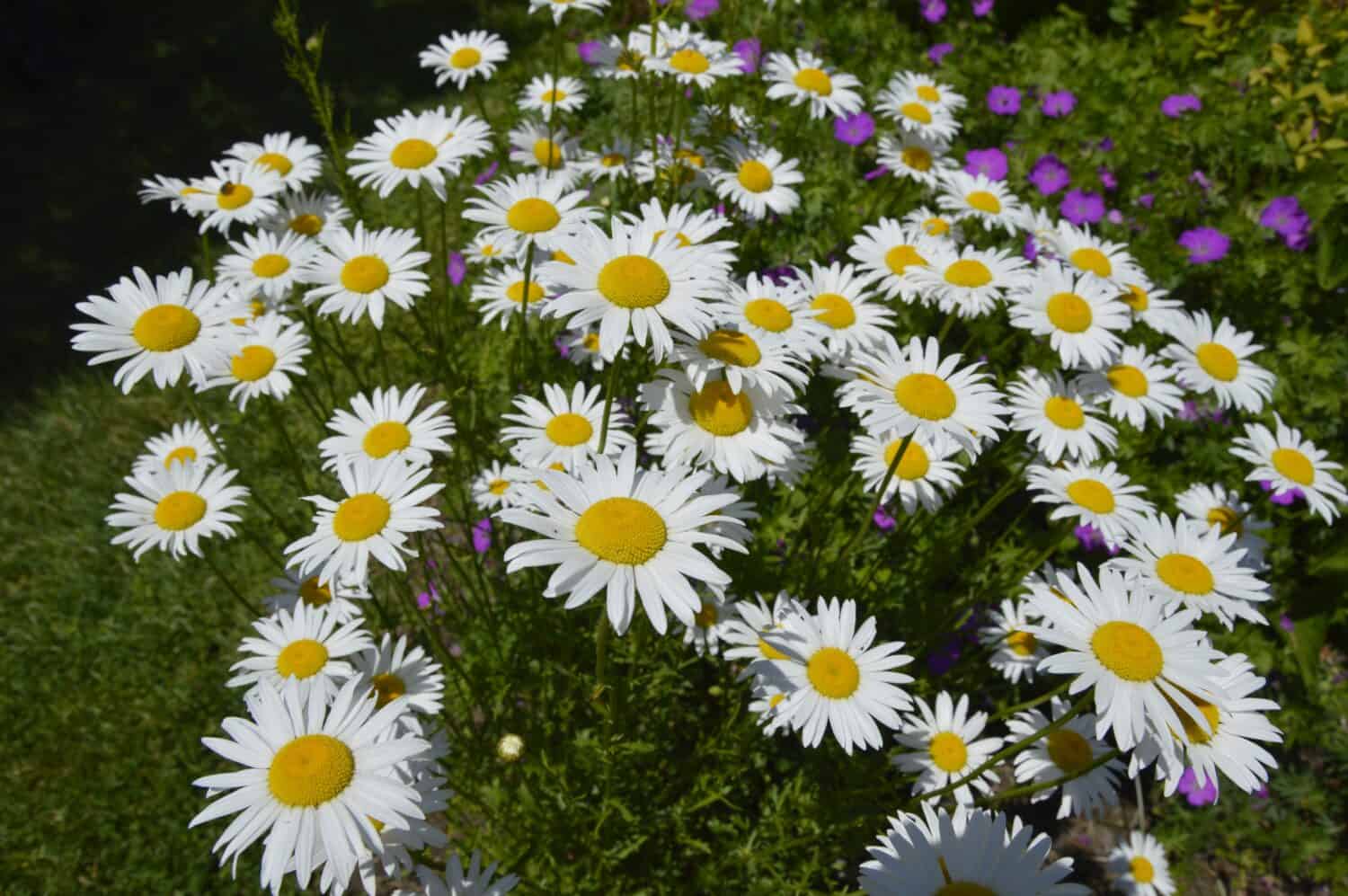
Shasta daisies are a popular plant choice due to their cheerful blooms that last from summer through fall. Although deadheading can be a bit challenging, the continuous bloom is well worth the effort. With their ability to grow in various soil types and only needing regular watering, these plants are easy to care for. When the center of the plant starts to die out, simply divide and transplant the new ones. Don’t forget to cut the pretty flowers to display in a vase! Keep in mind that direct seed planting will mean waiting until the following season to see any blooms, so it’s best to plant starter plants in early spring or fall. Perennial flowers come in a variety of shapes, colors, and maintenance requirements. It’s essential to choose plants that match your capabilities and consider their environmental needs to create a vibrant and healthy garden. Ultimately, the key is to select what works best for your specific situation.
